BACKGROUND
According to WHO estimates, 151,000 people newly developed TB in Ethiopia in 2020, of which 108,714 got notified (Global TB report, 2021) [1] . With nearly 9,900 of all people with TB also infected with HIV, Ethiopia is included in the list for the top 30 TB/HIV high burden countries. [2] Children account for nearly 10% of all cases, and many also suffer from TB-HIV coinfection. [1]
Ethiopia has achieved a treatment coverage of 71% of all people living with TB in 2020 and the TB case fatality ratio stands at 15%. Around 31% of the children (aged 5 years) that are household contacts of bacteriologically-confirmed TB cases have also been put on preventive treatment. [1]
Affected by the COVID19 pandemic, country’s TB case notification dropped in the second quarter of 2020, however, the health system is making efforts to revive its TB surveillance practices and the notification has improved to reach closer to the 2019 average quarterly notification trend.
Vision and priorities of Ethiopia's National TB Program (NTP) is crucial to the technology innovations in electronic case-based TB system’s functioning. Through a consultative process and with input from an external review of the TB-Leprosy program, the Ministry of Health of the Federal Democratic Republic of Ethiopia has updated the National Tuberculosis and Leprosy (TBL) strategic plan in November 2017. The revised plan throws light on the country’s focus on – strengthening quality TB diagnostic service availability and utilization, communication and social mobilization to address barriers and increase demand for quality services, adherence support and early case detection in community Care settings, and engagement of CSOs and NGOs in implementing and monitoring of strategic priorities. The plan further highlights and calls for accelerated and coordinated implementation of high impact evidence-based interventions to reduce the burden of TB among PLHIV; and strengthening TB laboratory services, including specimen transportation network. [3]
Ethiopia uses DHIS2 as the platform for TB notification, and currently, all the data is captured in aggregate form. At the same time, the NTP has a vision to soon transition from aggregate to individual patient data capturing. A pilot for case-based notification for MDR-TB patients has recently been launched (September 2021) across 67 health facilities.
Additionally, to complement the existing national HMIS data systems, the TB Data from DHIS2 can easily be integrated as indicators which enable comprehensive data review and analysis of TB data nationally.
It is empirical that technology penetration plays a vital role in enabling the evolution of information systems from paper to digital solutions. As per 2021 figures, about 38.5% of the population has a cell phone, and only about 11.2% (2018) use smartphones. Internet penetration stands at 20.6% in the country. Enhancing digital inclusion in Ethiopia is essential, given that access to reliable and affordable connectivity is a foundational step in maximizing the impact of deploying digital technologies on the government’s development aspirations. [4] , [5]
Apart from implementing the DHIS2 platform, the country is also leveraging other digital innovations for better data collection and data use for positive programmatic outcome as given below:
Smart care/ TENA care EMR is a digital platform that supports longitudinal record-keeping for a variety of health indices, including HIV/AIDS treatment, TB care, VCT, and antenatal care. However, with its limited adaptability and in the absence of any linkage with DHIS2, the system’s uptake and use are significantly low. [6]
Based on the multi-stakeholder discussions, interviews and independent research, and guidance from the National TB Program, this assessment report is an attempt to describe the current capacity and identified gaps/ challenges in the digital ecosystem of TB surveillance. The report shares strategic recommendations for developing a comprehensive case-based surveillance system in the country while leveraging the existing infrastructure, in-house capacity, and assets.

STATUS OF CASE BASED TB NOTIFICATION
In 2018, Ethiopia adopted DHIS2 as the national system for reporting of TB notification data. Manual registers are maintained at the health facilities for capturing all TB specific data and the data is then handed over to the central data entry unit (common to multiple programs) within the facility for the final data entry to DHIS2. For some facilities that do not have the hardware and infrastructure to perform data entry, all the data is compiled and shared with the district/ woreda level, where the data is entered to DHIS2 on behalf of these facilities.
This system has an integrated dashboard that aggregates the data on quarterly basis and automatic reports are generated for analysis. NTP is also working on a Digital health account (DHA), a software support for the existing DHIS2 system (supported by USAID and University of Oslo as Technical Partner), where WHO HQ helps with the further development of dashboard.
The national TB notification system allows management of both DR-TB and DS-TB cases.
In order to ensure the early identification of all TB cases and strengthening treatment delivery, the country has adopted a One-Stop Shop Approach to TB/HIV integrated service delivery at the clinics. Under this approach, TB and HIV clinics collaborate with each other through crossreferrals, and both TB and HIV patients receive a full package of services in one place. It was further supported by the innovative family-matrix-guided implementation approach through USAID’s Challenge TB project, to address access barriers, reduce delays in diagnosis, and improve management of TB among women, children, and other vulnerable groups.
Starting 2020, under the Ascent project, nearly 80 facilities in Addis Ababa and Oramia are participating in the implementation of 3 Digital Adherence Tools (Smart Pillboxes, Video Supported Treatment and Medicine labels/ sleeves), which will support treatment remotely and will provide more flexibility in TB care. The project aims to reach 5000 patients in four years, and in order to arrive on more precise study outcomes, a randomized controlled trial protocol has been introduced for enrolling patients.

ELECTRONIC TB NOTIFICATION DATA COLLECTION AND USE
| TARGET | CURRENT SCALE | COLLECTION TOOLS | DATA TYPE | DATA USAGE | |||
|---|---|---|---|---|---|---|---|

National Level
|
Data Not Collected at this level
|
DHIS2 dashboard |
|||||

Regional
level
|
10 | Data Not Collected at this level | DHIS2 Dashboard | ||||

District
Level
(Woreda)
|
1104 | 1104 (Data entered for facilities with inadequate infrastructure) | DHIS2 | Aggregated | DHIS2 Dashboard | ||

Facility level
|
6000 | 6000 | DHIS2 | Aggregate | DHIS2 Dashboard | ||

Community Level
|
Data not collected at this level | Data not used at this level | |||||

CASCADE OF CARE MONITORING
PRESUMPTIVE SCREENING
TB Testing
Treatment Initiation
Treatment Monitoring
Treatment Outcome
Contact Tracing






| KEY DATA VARIABLES | Yes/No |
|---|---|
| Demographic details (Age, DOB, Gender) |
|
| Address and contact details (Country, Division, District, House address) |
|
| Geolocation (GPS coordinates of the household) | |
| Contact details (Phone number/Mobile number, WhatsApp, Email etc.) |
|
| Health Facility address |
|
| Type of health facility (Public, Private etc.) |
|
| Site of TB (Pulmonary, Extra-pulmonary) |
|
| Type of diagnostic test (Microscopy, GeneXpert, TruNaat, CXR, etc.) |
|
| Date of test result | |
| Drug susceptibility (DSTB, DRTB) |
|
| Treatment Regimen |
|
| Treatment start and end date |
|
| Co-morbidity (HIV, Diabetes, COVID-19 etc.) |
|
| Treatment monitoring/adherence |
|
| Treatment outcomes |
|
| KEY INDICATORS | Yes/No |
|---|---|
| Presumptive screening (proportion) | |
| Treatment initiation (proportion) |
|
| Treatment monitoring/adherence |
|
| Treatment outcome (proportion) |
|
| Spatial distribution of TB notification |
|
| Age-group & sex wise aggregate numbers and proportions notified |
|
| Basis of diagnosis wise aggregate numbers and proportions notified |
|
| Type/site/drug resistance wise aggregate numbers and proportions notified |
|
| Provider source-wise aggregate numbers and proportions notified |
|
| Comorbidity wise aggregate numbers and proportions notified |
|
| Key-population wise aggregate numbers and proportions notified |
|
| Estimate/Target wise notification/treatment coverage (proportions) |
|
| Provider-type disaggregated treatment outcomes (proportions) |
|
| Comorbidity disaggregated treatment outcomes (proportions) | |
| Key population disaggregated treatment outcomes (proportions) |
|
 Digital
(aggregated)
Digital
(aggregated)
STATUS OF ELECTRONIC CASE BASED TB SURVEILLANCE
Electronic System For Case Based TB Notification

Only aggregate data entry in DHIS2
Lowest Unit For TB Notification Digitisation

Facility level
Stage Of Notification

Treatment initiation
Level Of Access And Use Of TB Notification Data

Facility level
Private Sector Notification

Aggregate data reporting with the tagged public facilities (some have a formal access to DHIS2)
Frequency of digitization of TB notification

Quarterly
Mode Of Follow-Up With Notified Cases

Physical visits
Scale Of Implementation

DHIS2 aggregated system is scaled at National level,
Contact Tracing For TB Notified Cases

None
Multi-Channel Enablement

Offline and Online use of DHIS2. Use of mobile phones in Case based data entry pilot
Govt. order for mandatory TB notification

None
PRIVATE SECTOR NOTIFICATION

Nearly 100% of the private providers are formally engaged with NTP, and contribute to about 18% of the total identified TB cases. The private sector notification is in the form of aggregate data that is either added in DHIS2 along with the data from some tagged public facility, or otherwise directly entered by the private institution (few formally engaged PPMs have access to DHIS2).
COUNTRY IT CAPACITY
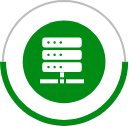
Country Server
DHIS2 platform is shared by other health programs too, and server is maintained at the Health Information Technology Directorate.
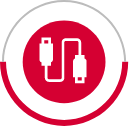
Interoperability
Data export and APIs are available for integration with other systems, but it hasn’t been explored.
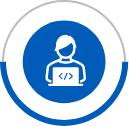
Country IT team
Policy and Planning Directorate of MoH has developed the DHIS2 application and the HIT Directorate maintains the system
CURRENT RESOURCES AVAILABLE
Funding is available from JSI for supporting enhancements of the current analytics tools and dashboard.
The Global Fund and USAID funds available for developing case-based MDR treatment monitoring and adherence tool.
State (Government) has internal budget for supporting the integration of GeneXpert with the national case-based reporting tool.
Resources are also available for developing a loss to follow up module, that can generate notifications for such events.

MILESTONES ACHIEVED AND ROAD MAP
2018
DHIS2 aggregate platform replaced the previous national HMIS system
2023
Scale up of case-based data entry for DR TB, with analytics and dashboard access at facility level
2019
Development of DHIS2 dashboards for concurrent monitoring and Evaluation
2020
Digital adherence tool for TB patients was developed
2021
Development of DHIS2 tracker system for Case based TB notification. Pilot implementation for both web and mobile use for tracker data entry for DR TB
2022
Preparation scale up of case based data entry pilot Improving hardware and infrastructure at facilities for patient level data entry
2024
Scale up of case-based data entry for DS TB and entire cascade of care, Implementation of an offline data entry app

OTHER COMPLEMENTING DIGITAL TOOLS
| Purpose | Tools | Channel | Developed By | Supported By | Scale |
|---|---|---|---|---|---|
| Digital Adherence | Nil | NA | NA | NA | NA |
| Pharmacovigilance | VigiLyse and Vigibase | Web Application | UMC | UnitAID, USAID, Global Fund | Pilot |
| Laboratory Information Management | GxAlert | Web Application | Cepheid | USAID | GeneXpert diagnostic sites |
| Community Led Monitoring (CLM) | eCHIS | Mobile App | MoH | JSI-CIFF | Pilot (120 health posts) |
| Contact Tracing | Nil | NA | NA | NA | NA |

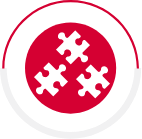

KEY CHALLENGES

Shortage of personnel and High turnover rate results in an acute crunch of trained manpower at the data entry points.

With more than 4000 facilities to report data and the internet conditions being very unreliable, real-time case-based data entry remains to be a huge challenge. Internet connectivity is a major bottleneck for the country in transitioning ahead from their current aggregate system.

DHIS2 being a common tool for all health programs and with it being owned by the Policy and Planning Directorate, thus any changes/ customizations in aggregate forms are to be routed through the M&E team at MoH, which causes significant delays.

In the current setting, data input from the facilities faces major timeliness issues (because of limited infrastructure) and keeping a check on data quality also is a limitation, which renders the data only partly suitable for any decision making.

Availability of desktops and laptops for data entry is also inadequate for direct data reporting from facilities, and as a result of this, data is entered from district level and that adds to the delays and data quality concerns with data compilation (data entry away from the site of collection).
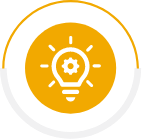
NTP VISION
- ❖ Transition from aggregate to case-based data collection for the entire cascade of TB care.
- ❖ Development and implementation of a mobile app for enabling the data capture on a real time basis.
- ❖ Improving infrastructure at facilities with more stable internet connections.
- ❖ Improvement in data quality (accuracy, validity and precision) and reducing duplicates.
- ❖ Real time dashboards for reviewing data against the targets from Strategic Plan.
- ❖ Identifying resources for capacity building of data entry personnel and system implementation

RESOURCES NEED
Based on multi-stakeholder discussions, country feedbacks and recommendations for fulfilling country’s vision, we have put together an estimated investment requirements and areas needing support for provisioning of a comprehensive case based digital TB surveillance system.
Hardware and Infrastructure :

Mobile Devices (for data collection): Ethiopia has 6000 facilities and to provision tablets for every facility for case-based TB surveillance USD 1,200,000 will be needed assuming USD 200 per mobile devices.

Tablet (for data use): Ethiopia has 1104 districts and 10 regions to promote active data use, each district and region should be given a tablet which would cost roughly around USD 222,800 assuming USD 200 per Tablet devices.

Internet: In case WiFi is not available in each facility, then mobile internet cost of around USD 2,134,200 should be considered (assuming USD 100 mobile data cost for the entire year per facility, district and regional user).

Server: Based on the current volumes of new cases, Ethiopia would need an investment of USD 20,000-30,000 for next 3 years for server and server maintenance.
Note: Existing devices available through other health programs can be leveraged. In that case, the above-mentioned costing can be accordingly considered.
Software Development :

Based on various multi-stakeholder meetings and given the fact Ethiopia already have a strong foundation of DHIS2 aggregate system for TB, around USD 500,000-750,000 should be budgeted for a comprehensive TB surveillance system and analytical dashboard for data use.
Capacity Building and Implementation :

After the software development, a dedicated pool of technical resources will be needed to support platform administration, data management and support. A team of 4-6 skilled resources attributing to a cost of around USD 120,000-180,000 per annum should be budgeted (or USD 360,000-540,000 for 3 years assuming USD 2,500 month per resources). Additionally, reskilling of the current IT team should be budgeted.

Training: This would involve training material development and onsite and remote training of the trainers. 2-day Training sessions should be planned for each of the 1104 districts over a period of 3 years, which could cost roughly USD 200 per training, amounting to USD 220,800, which would be complemented with comprehensive e-training packages. Also, a dedicated trainer should be budgeted in case there is none.
TOTAL investment of around USD 5.0 – 5.5 million for 3 years will be needed on developing a comprehensive case-based digital TB surveillance system for Ethiopia.
Disclaimer: The above budget is a function of number of facilities, districts and regions and expected volume of data. This only provides a ballpark figure of what is needed in terms of budget.

Recommendations
Following are some of the key recommendations suggested based on the findings of this assessment of country’s digital ecosystem and infrastructure:

Strategic Costing Plan
As a first step it is important for the country to create a comprehensive costed action plan for development, implementation and scale up of the TB case based surveillance system.
Based on NTPs vision and the recommendations for improvements , the plan should clearly define targets with actionable interventions and funding requirements supported with a detailed work plan along with timelines. The plan will help the country to assess and monitor the progress to ensure that any risks can be duly mitigated.
Tentative timeline: Month 0-1

Implementation and scale of Case Based TB surveillance systems
The NTP has already established DHIS2 environment which has the core infrastructure in terms of database and deployment environment. It has built the DHIS2 expertise and capacity which acts as a strong foundation for executing the vision of implementing a comprehensive and integrated real-time case-based TB surveillance and notification system.
It is recommended that this existing capacity is leveraged for expanding the DHIS2 tracker app. While the current tracker development has been planned to cover all the DR TB patients, the application should be further expanded to include monitoring of entire continuum of care for both DR and DS TB, including presumptive screening, referral, treatment initiation, treatment adherence & outcome, and contact tracing in real-time.
The solution architecture should support adding all the above components in phases supported with versioning to ensure seamless upgrades and continuity.
Some of the existing templates already built on DHIS2 tracker systems currently being used by other countries such as WHO’s prevent TB tool or other DHIS2 tracker-based systems can be explored for fast-tracking the software development processes. [7]
Tentative timeline: Month 0-12

Mobile app
One of the challenges reported by the NTP during the assessment is the lack of availability of real time data for stakeholders. One effective way to overcome this is to support the current data collection processes by introducing a mobile application, which is in line with the country’s efforts of improving the overall digital ecosystem.
As a recommendation, the mobile application offered by DHIS2 which has additional features on data collection, security ,offline data collection, encryption ,version management etc should be extended for use even for aggregate data reporting, specially from facilities with limited IT infrastructure should be reviewed.
This would also ensure that the data structures are consistent. Also, the app is supported with a configurable set up to support any updates / changes to the program.
Additionally, the DHIS2 mobile framework uses open-source technologies like Java, Postgres, React and Android, which are easily supported by country IT teams. The standard best practices of mobile development like version management , data encryption etc are also part of the mobile framework which make this a more robust solution. [8]
Tentative timeline: Month 6-12

System Integration
One of the challenges highlighted by NTP is the leveraging the data collected from the multiple sources into the main DHIS2 systems as a central system for effective use.
The current DHIS2 platform and infrastructure needs to be extended to support integration with external systems like GeneXpert, TruNat, Digital X-Ray outputs, Pill boxes and other adherence tools which help in use the data effectively for the patient continuum of care as highlighted by the National program.
Recommended exchange / ETL tools like Talend , Informatica which include these features make the data management task much easier and simultaneously improve data warehousing that need to be considered. [9.1] , [9.2]
The DHIS2 platforms architecture is easily compatible with these standard tools and processes making this an effective solution. [10.1] , [10.2]
The data exchange process should follow and comply with FHIR , GDPR standards for more secured and seamless data exchange.
Tentative timeline: Month 12-18

Data Use
The NSP clearly emphasizes on the importance and need for improve data use. This can be made possible by making case-based TB data and required line listings available at the lowest level health functionary involved in TB care.
Building on the current DHIS2 visualization module which offers a comprehensive dashboard for reviewing of program and data indicators, additional features of pivot table , event reports which support dimensions , data aggregation reports ,individual line lists and job aids with timeline views are extremely useful.
Once a robust data analytics and data use model has been established with the current DHIS2 and other systems then a more advanced analytical dashboard should be designed linked to the new case-based TB surveillance system that is already being planned.
To achieve this , and to strengthen and expand the data visualisation scope and making effective use of data for predictive modelling , data science and for advanced analytics it is also recommended to use best of the breed tools like Tableau , Power BI which offer these features. The current DHIS2 platform offers APIs which can connected for these applications and be used as an extended analytical component of the data analysis framework. [11]
Tentative timeline: Month 6-18

Capacity building for application maintenance
One of the main challenges highlighted by the NTP is the ongoing maintenance and enhancements of the platform. Since the application requires regular updates and to ensure effective adaptation and scale up the system support team requires trained personnel on DHIS.
Strengthening the NTP team with trained system administrators will help in reducing costs (in seeking technical support) and improving and expediting the planned implementations.
Tentative timeline: Month 0-6

Additional data capturing mechanisms
To make sure that paper based patient records data is integrated with the DHIS2 tracker systems technical solutions like OCR (optical character recognition) can be considered.
The DHIS2 platform supports reading from these structures. This would help in data upload of all historical data with less difficulties.
Tentative timeline: Month 6-12

E-Learning
To address the challenges with periodic training of facility level staff to orient them on using eTB manager for direct data reporting, the MOH must engage in development of a comprehensive eLearning module for app training.
While DHIS2 offers standard training modules on the application , training tools like Moodle [12] built on standard LMS framework can be reviewed for application rollouts.
Additionally, for training and updates on the latest manual of procedure and continued medical education on TB care, modules can be developed for TB Health providers, administrators at facility and district level to develop and enhance M&E competencies for ensuring a consistent program oversight, especially for the case-based tracker roll out within the existing applications.
Guide TB platform developed by WHO Philippines is a good example of eLearning module for health staffs involved in TB care.
Tentative timeline: Month 0-3

Patient Interactive Systems
Establishing a direct and secured mechanism for engaging with patient has potential for drastic improvements in tracking lost to follow-up patients. Auto generation of notification and messaging by the system through communication channels like Social Media channel, IVRS and SMS outbound messages should be explored. Open-source applications like Open MRS can be used for these activities. [13]
Tentative timeline: Month 12-24

Data Quality
As part of the standard practice, the application(s) / solutions should follow a set of standard data quality mechanisms or the Data Quality Assurance (DQA) framework which would help in improved data credibility and use.
UIC Code : Having a centralized Unique Patient ID system or leveraging existing national ID supported with an improved search functionality can help drastically reduce the duplication of case-based records.
This should be generated automatically through the new case-based TB surveillance system that is already being planned.
Data access control is one such DQA measure that will regulate user’s access to only relevant metadata. It will involve the principle of least privilege (POLP), i.e., user’s access will be determined based on their role in the project. POLP will define and limit what data they have access to and who has that access.
Tentative timeline: Month 6-18

Device Procurement
One of the limitation highlighted by NTP is the need to improve the hardware availability at the facility level. To streamline this, procurement, distribution and maintenance of the required data entry equipment like laptops, mobile/tablet devices should be done on an urgent basis. Improving the current infrastructure at the facilities is crucial for a complete transition to digital notification.
Tentative timeline: Month 0-6

Community Monitoring Systems
As expressed by the NTP, the national TB notification and surveillance system should explore ready-to-use open source CLM platforms like One Impact.
Tentative timeline: Month 6-12

Contact tracing application implementation
To strengthen the TB surveillance efforts of the country and for reaching out to all TB positive individuals, an active focus on contact tracing becomes crucial. The standard guidelines for household screening can be incorporated as a module in the national TB notification tool and be implemented to fast track the country’s efforts to eliminate TB and target the initiation of preventive treatment for all TB contacts.
Tentative timeline: Month 6-12

Strategic Technical Recommendations
Application Upgrades including Server Augmentation & Infrastructure Upgrades : To make sure that systems implementation and scale up of application is supported well, the key need is to have a long-term strategic plan that would cover the technical and operational objectives.
The strategy recommended would cover the following core areas
✓ Technical Upgrades: Based on the architecture, the upgrade would be done with the database, a middleware system, the operating system or the hardware.
Additionally, the architecture should support the integration layer which would be needed for data exchange with other national / external systems. The technologies that need to be brought in and the areas of inter-connection need special focus.
Recommended data system architecture would include updating the version of the current DHIS2 to 2.34 which offers better features on data management , encryption and exchange standards.
Additionally, the advance admin features offered by this version help the administrators to support the operational needs better for onboarding users , real time change in data variables and user management etc effectively.
Apart from this version 2.34 also supports compliance to GDPR standards and offers more controlled data encryption practises. [13]
✓ Performance Optimisation & Testing : To support the national scale up and implementation strategies it is very essential to have system(s) and application testing done to enable a reliable platform and which also helps in architecture updates and augmentation.
While core teams from the user community who are involved in the testing learn and automatically get trained, Automated System and Application Testing tools like Selenium and Appium also may be considered. Load Testing tools which helping in data base sizing and planning need to be adapted for effective planning. [14]
✓ Application & System Security Audit
To strengthen the current systems framework and ensuring long term sustenance it is important to have regular evaluation of the security of the information and systems by measuring how well it conforms to an established set of criteria.
These would also include developing a framework which should outline policies in line with recommended standard policies like HIPAA [15.1] , [15.2] to cover
• Patient Data Management
• Server & Infra guidelines
Apart from application measures offered by DHIS2 [14] for patient data security , hosting solutions offered from Azure also cover these as part of their deployment options which can be considered as part of systems hosting. [16]
ACKNOWLEDGMENT
We thank the National TB and Leprosy Program Manager,Mr Taye Letta and the entire team for participating and engaging in the assessment. We would also like to extend our gratitude to Dr. Abayneh Admas for providing valuable insights into Ethiopia’s svision for creating an advanced case-based TB surveillance and notification system.
CONTACT DETAILS
National Tuberculosis and
Leprosy Program,
Directorate of Disease Prevention and Control
Ministry of Health
1234 Sudan Street
Addis Ababa, Ethiopia
Telephone : (0251) 115517011
Email : tayeletta@gmail.com
REFERENCES
- TB Data References : https://worldhealthorg.shinyapps.io/tb_profiles/?_inputs_&entity_type=%22country%22&lan=%22EN%22&iso2=%22ET%22.
- TB Data References : http://www.stoptb.org/countries/tbdata.asp.
- National Strategic Plan : https://www.afro.who.int/sites/default/files/2019-04/Ethiopia%20-%20National%20Strategic%20Plan%20Tuberculosis%20and%20Leprosy%20Control%202013-2020.pdf.
- Digital Landscape : https://datareportal.com/reports/digital-2021-ethiopia.
- Digital Landscape : https://rlist.io/data/7g6k7h9b/ethiopia.
- MoH information system architecture : https://www.moh.gov.et/ejcc/sites/default/files/2020-10/Information%20Revolution%20Booklet-.pdf
- DHIS2 Meta Data Tools : https://dhis2.org/metadata-package-downloads/#tb
- DHIS2 Mobile App : https://dhis2.org/android/.
- System Integration Tools ( Talend , Informatica ) : https://www.talend.com/index.php, https://www.informatica.com/
- DHIS 2 API & DHIS2 Data Transformation Services : https://docs.dhis2.org/en/develop/using-the-api/dhis-core-version-235/web-api.html , https://docs.dhis2.org/en/use/user-guides/dhis-core-version-236/maintaining-the-system/importexport-app.html
- DHIS2 Power BI : https://community.dhis2.org/t/dhis2-to-powerbi-connector-is-ready-check-out-the-video-test-it-use-it-and-give-us-feedback/37043
- Application Training Tool : https://moodle.org/
- OPEN MRS : https://openmrs.org/
- Features of DHIS 2.34 : https://dhis2.org/overview/version-234/
- Performance Tools ( Selenium , Appium ) : https://appium.io/, https://www.selenium.dev/
- HIPAA Compliance Framework : https://www.hhs.gov/hipaa/for-professionals/security/laws-regulations/index.html, https://www.hipaajournal.com/considered-phi-hipaa/
- Azure Hosting Services : https://docs.microsoft.com/en-us/azure/compliance/offerings/offering-hipaa-us
.png)


